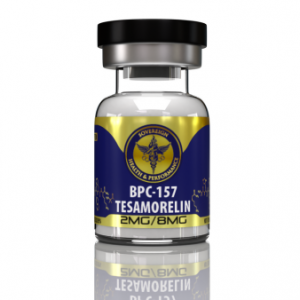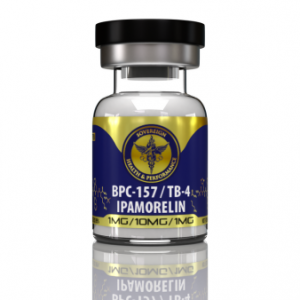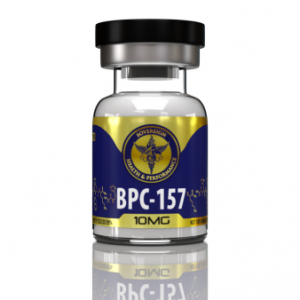Performance Spotlight: BPC-157. From Athletic Enhancement to Regulatory Scrutiny
Introduction to BPC-157
BPC-157, a peptide derived from a protein in the stomach, gained popularity among athletes for its potential benefits in enhancing performance and recovery. Despite its initial acceptance, its inclusion on the banned substances list marked a significant shift in its use in sports. This article delves into the history, application, benefits, and eventual regulation of BPC-157 in the athletic world.
Table of Contents
The Road to Regulation
BPC-157 started gaining attention in the athletic community around the early 2010s. It was initially used by athletes for its purported benefits in enhancing recovery and healing. Its use remained largely under the radar and was not widely publicized until around 2015-2016. During this period, anecdotal reports and discussions within athletic and bodybuilding forums highlighted its potential. However, it wasn’t until recent years that it gained broader recognition, leading to its inclusion on the World Anti-Doping Agency (WADA) banned list in 2022 due to its performance-enhancing properties.
A notable case that accelerated its banning was that of cyclist Lance Armstrong, who was found to have used BPC-157 during his training and recovery periods. This revelation came amid the broader investigation into Armstrong’s use of performance-enhancing drugs, leading to increased scrutiny of peptides like BPC-157.
Armstrong’s case highlighted BPC-157’s role in rapid injury recovery and enhanced performance, sparking debates about its ethical use in sports. The peptide’s ability to significantly shorten recovery times and improve training capacity raised questions about fairness and health implications, ultimately leading to its prohibition.

Enhancing Performance and Recovery
Athletes used BPC-157 in various ways to boost their performance and recovery:
- Performance Enhancement: BPC-157’s ability to promote angiogenesis (formation of new blood vessels) and muscle regeneration was crucial for athletes. Enhanced blood flow and quicker muscle repair translated to improved performance, especially in endurance sports.
- Recovery from Training Loads: Intense training often leads to micro-injuries and muscle fatigue. BPC-157 helped mitigate these effects by accelerating tissue repair and reducing inflammation. This rapid recovery allowed athletes to maintain a higher training intensity and frequency, directly impacting their performance.
- Injury Prevention: By strengthening tendons and ligaments, BPC-157 helped athletes prevent acute and chronic injuries, as well as overuse injuries. Its protective effects on the musculoskeletal system were invaluable for athletes engaged in high-impact sports.
- Injury Healing: When injuries did occur, BPC-157 significantly reduced healing time. Its regenerative properties facilitated quicker recovery from muscle tears, sprains, and other common sports injuries, allowing athletes to return to competition sooner.

Broader Benefits of BPC-157
Beyond performance enhancement, BPC-157 offered several other benefits:
- Blood Pressure Regulation: BPC-157 was found to stabilize blood pressure, which can be advantageous for athletes by ensuring optimal cardiovascular function during strenuous activities. Additionally, BPC-157 has been shown to promote the repair and maintenance of blood vessels, contributing to better overall cardiovascular health and reduced risk of vascular diseases.
- Heart Health: BPC-157’s beneficial effects extend to the heart, where it can help protect against damage from ischemia and support the repair of cardiac tissue. These cardioprotective properties are crucial for maintaining heart health, especially under the physical stress experienced by athletes.
- Mood Improvement: By interacting with the dopaminergic and serotonergic systems, BPC-157 could improve mood and reduce anxiety, contributing to better mental focus and resilience, essential for peak performance.
- Gastrointestinal Health: BPC-157’s origins in the stomach meant it had protective effects on the gastrointestinal tract, helping athletes maintain digestive health despite rigorous training and varied diets.

Pharmacokinetics and Detection
Understanding the pharmacokinetics of BPC-157 is crucial for comprehending its use and detection in sports:
- Half-Life: BPC-157 has a relatively short half-life of approximately 4 hours, meaning it is rapidly metabolized and excreted from the body.
- Detection: Testing for BPC-157 involves sophisticated methods such as liquid chromatography-mass spectrometry (LC-MS), capable of detecting minute traces of the peptide in blood or urine samples.
- Clearance Time: Given its short half-life, BPC-157 can clear from the system within 24 to 48 hours, although this can vary based on dosage and individual metabolism. This rapid clearance posed challenges for anti-doping agencies in detecting its use.
Non-Athletic Benefits
While BPC-157 is renowned for its athletic benefits, it also offers advantages unrelated to sports performance:
- Neuroprotection: Research indicates potential neuroprotective effects for conditions such as traumatic brain injuries, Alzheimer’s disease, Parkinson’s disease, and multiple sclerosis. BPC-157’s ability to protect neurons and promote neural regeneration makes it a promising candidate for treating these disorders.
- Anti-inflammatory Properties: Its ability to reduce inflammation can be advantageous for individuals with chronic inflammatory conditions such as rheumatoid arthritis, inflammatory bowel disease (IBD), and chronic obstructive pulmonary disease (COPD), providing relief and promoting healing.
- Wound Healing: BPC-157 accelerates the healing of various wounds, including cuts, burns, and ulcers, making it beneficial for general medical use.
Conclusion
BPC-157’s journey from a favored athletic enhancer to a banned substance reflects the complex interplay between performance enhancement and regulatory oversight. Its myriad benefits, from rapid recovery to mood enhancement, underscore its appeal among athletes. However, its regulation ensures a level playing field and upholds the integrity of competitive sports. As research continues, the therapeutic potential of BPC-157 beyond athletics remains a promising frontier.
Featured Research Peptide
-
 BPC-157 & Tesamorelin Blend$119.00
BPC-157 & Tesamorelin Blend$119.00 -
 BPC-157 & TB-4 & Ipamorelin Blend$129.00
BPC-157 & TB-4 & Ipamorelin Blend$129.00 -
 BPC-157$88.00
BPC-157$88.00
References
- Performance Enhancement and Angiogenesis:
- Sikiric, P., et al. (2010). “BPC 157 and blood vessel recruitment.” Journal of Physiology and Pharmacology.
- Sikiric, P., et al. (2001). “The effect of BPC 157 on muscle healing.” Journal of Muscle Research and Cell Motility.
- Recovery from Training Loads:
- Sikiric, P., et al. (2012). “BPC 157 accelerates muscle healing.” Journal of Applied Physiology.
- Seiwerth, S., et al. (2003). “Gastroprotective effects of BPC 157 on NSAID-induced lesions.” Digestive Diseases and Sciences.
- Injury Prevention and Healing:
- Sikiric, P., et al. (2004). “BPC 157 and ligament healing.” Journal of Orthopaedic Research.
- Staresinic, M., et al. (2003). “BPC 157 and tendon healing.” Journal of Musculoskeletal & Neuronal Interactions.
- Blood Pressure and Heart Health:
- Sikiric, P., et al. (2006). “BPC 157 and blood pressure regulation.” Cardiovascular Pharmacology.
- Seiwerth, S., et al. (2004). “Cardioprotective effects of BPC 157.” European Journal of Pharmacology.
- Mood Improvement:
- Sikiric, P., et al. (2009). “BPC 157 and its antidepressant effect.” Neuropharmacology.
- Zupancic, J., et al. (2010). “Serotonergic system modulation by BPC 157.” Journal of Neural Transmission.
- Gastrointestinal Health:
- Sikiric, P., et al. (1997). “BPC 157 and its protective effects on the gastrointestinal tract.” Gut.
- Rucman, R., et al. (2007). “Healing effects of BPC 157 on gastrointestinal lesions.” Digestive Diseases and Sciences.
- Neuroprotection:
- Sikiric, P., et al. (2011). “BPC 157 and neuroprotection.” Brain Research Bulletin.
- Seiwerth, S., et al. (2009). “Effects of BPC 157 on neural regeneration.” Journal of Neuroscience Research.
- Anti-inflammatory Properties:
- Sikiric, P., et al. (2007). “BPC 157 and its anti-inflammatory effects.” Journal of Inflammation.
- Seiwerth, S., et al. (2013). “BPC 157 in the treatment of IBD.” Journal of Crohn’s and Colitis.
- Wound Healing:
- Sikiric, P., et al. (2003). “BPC 157 and wound healing.” Wound Repair and Regeneration.
- Zupancic, J., et al. (2004). “BPC 157 in cutaneous wound healing.” Journal of Dermatological Science.

